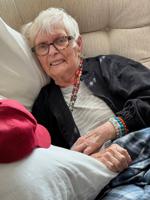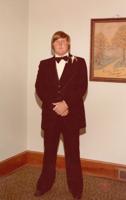If someone walked into my sophomore English classroom the week before spring break, they might have questioned my classroom management. They would have seen students sitting in groups, talking and gesticulating wildly, coming and going with little more than a word to myself or another student and using their cell phones with little regard for any of the other classroom activity.
Within this seeming chaos, there was order and quite a lot of productive work happening. After writing found poetry using Elie Wiesel’s Holocaust memoir “Night,” I told my students their work was so good they needed to share it and suggested the class make an ebook or website. They wanted to do both, so they are.
I organized teams based on students’ talents and interests, and the work began. Some are writing and editing content, others are creating art content using Photoshop, some are responsible for recording audio and video performances of the poems, while yet another group is uploading and managing web content. The group with their cell phones is documenting the process as the initial stages of their publicity campaign.
This is project based learning, and it is all the buzz in education.
Edutopia, a leading education blog, describes project based learning, or PBL, as “a dynamic approach to teaching in which students explore real-world problems and challenges,” while Wikipedia notes PBL as an “alternative to paper-based, rote memorization, teacher-led classrooms.”
In short, PBL is learning by doing, an idea championed by such education hard-hitters as Socrates and John Dewey.
The PBL environment changes the traditional roles of students and teachers and puts learners in the driver’s seat.
Heidi Bullock, a Brevard High teacher, described the role of the PBL teacher as someone who “facilitates the learning process by providing or helping acquire resources, monitoring group processes, and coaching students in the metacognitive processes (problem solving, collaboration, communication, reflection, self-evaluation) necessary for that group to complete its project or solve its problem.”
“Students within the group,” Bullock said, “determine how to divide the task of producing/solving equitably among themselves, negotiate with the teacher how their work should be assessed, establish their own benchmarks for measuring progress and the timetable for reaching those benchmarks, and contact the real-world experts to critique their final product/project.”
Real growth occurs when students take those kind of leadership roles, and teachers are definitely seeing it in their students.
“Students are not told exactly what to do or how to do it. This develops both independence and creativity,” said Jennifer Williams, teacher and founder of the successful T.I.M.E. science program at BHS. “They have to persist and problem solve to continue moving forward as they seek to complete their projects. They learn information, techniques and skills that arise naturally because they are needed at the time.”
Students learn more than specific skills in the PBL environment.
“Students gain a love for their work as they perfect it and present it to authentic audiences as a form of evaluation. They become more confident and mature,” Williams said.
Denise Danos, a Pisgah Forest Elementary teacher, sees similar results in her own students.
The children are so proud of their projects because they were allowed the freedom to present as they liked,” Danos said. “When you give them the freedom, it opens their minds to create. With the projects being more student led, it builds confidence as well.”
Students see it in simpler terms.
“Projects help apply concepts to real life,” said Brevard student Jeremy Dodson.
Abby Williams, also a BHS student, understands that PBL improves her learning outcomes.
“When I am learning through project based learning, it tends to stick in my brain better than just being told information,” Williams said.
Despite the positive feedback from teachers and students, transitioning to PBL is not always easy.
Brevard High teacher Trina Hendricks recalls a lesson she had to learn as her students began to work on projects.
“I used to think students were wasting time during the planning phase because they didn’t look busy,” she said, “but over time I have learned that allowing them ample planning time results in a better project. They need time to think and plan.”
PBL not only looks different from traditional learning, it can feel different too. When students take the reins, things do not always go as planned, and students have to learn from their setbacks.
“Students will make missteps,” Bullock said, “but it is those missteps that give them the most opportunity to learn deeply.”
And PBL does help students learn deeply.
“Whenever you are doing this [PBL], you get more involved and you care more about it and it is just way more interesting,” said BHS student Cameron McCathern, “and you get to see how what you are learning about actually applies in the real world, which I think is pretty cool.”
PBL is an essential tool educators can use to teach the four C’s of 21st century skills — critical thinking, communication, collaboration, and creativity.
Students may not contemplate how PBL develops these skills, but they know that they are developing.
BHS student Lauren Tooley clearly understands PBL’s goals.
“I think this [PBL] is awesome. It gives us real-world experience for things we will have to do as an adult. We have to learn to work with other teams and communicate our thoughts and ideas. It also motivates us more because we are all working toward a common goal,” Tooley said. “Doing projects that are relevant to the subject but also integrate real-world situations are so cool. Students are better prepared to be successful at a job when they are older, which I think is really important.”
(Meredith Licht is a twelve-year veteran teacher in Transylvania County Schools and is the president of the Transylvania County Association of Educators.)













Commented
Sorry, there are no recent results for popular commented articles.